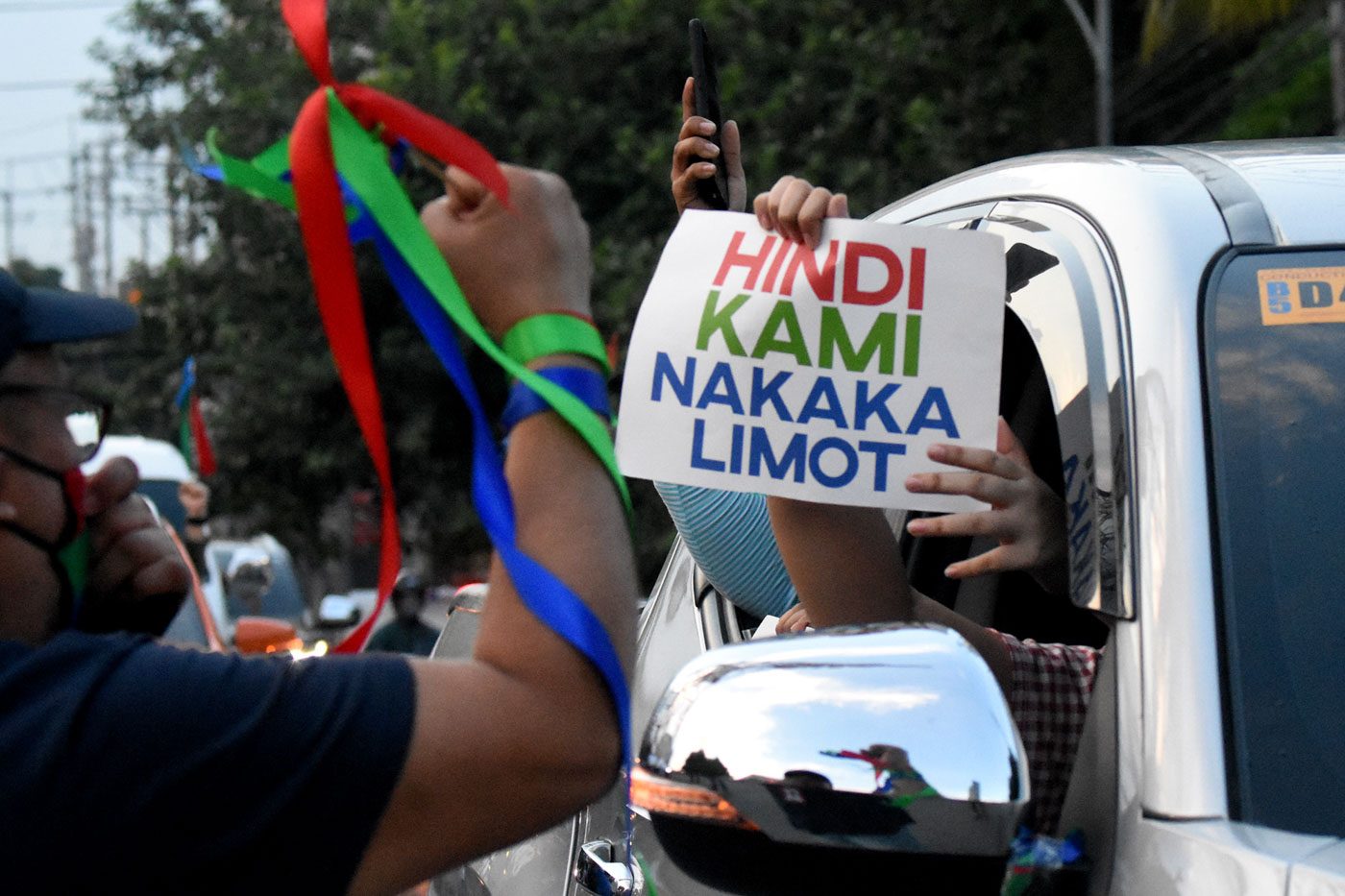SUMMARY
This is AI generated summarization, which may have errors. For context, always refer to the full article.

Car horns, traffic lines, crowds in the streets with people shouting – it was a familiar sight in recent Philippine history, but this time with face masks and some physical distancing.
The congressional rejection of the ABS-CBN franchise renewal on July 10 sparked noise – not just in the online sphere, but along roads, too, from Filipinos who made most of what could be done on a restricted, quarantined physical space.
Beginning the day after the rejection, Kapamilya employees, celebrities, and supporters have been staging noise barrages outside the media giant’s headquarters in Quezon City to protest against the decision of 70 lawmakers who voted to reject ABS-CBN’s bid for a new franchise.
ABS-CBN’s franchise expired last May 4. (READ: TIMELINE: Duterte against ABS-CBN’s franchise renewal)
Despite the angry voices of those who participate, noise barrages are a form of active nonviolence. When did noise barrages become a signature form of the Filipino protest?
Roots
Noise barrages became popular during the dark days of Martial Law, said Lou de Leon, a history professor at the University of the Philippines Diliman.
“Since open dissent will get you arrested, people’s protests were expressed through noise barrage,” she said.
In January 1978, late dictator Ferdinand Marcos called for the Interim Batasang Pambansa elections to be held on April 7 that year. Oppositionists did not believe that a fair and credible election would be possible under Marcos – who controlled the Commission on Elections and the media – and thus opted for a boycott.
Students were particularly active in the campaign, as they printed and distributed campaign materials, went house-to-house to campaign, and trained poll watchers, according to the Martial Law Museum.
On April 6, the day before the elections, residents of Metro Manila showed their support in the form of a noise barrage. The Official Gazette describes it as “one of the most famous protests of the era.”
In the evening, people stormed the streets making whatever noise they could. They made noise by shouting, banging pots and pans, drums, and vehicle horns. Even Catholic churches participated by ringing bells.
The late senator Aquilino “Nene” Pimentel Jr later explained that the noise barrage was meant to demonstrate the people’s opposition to the administration, even if their votes may not be recognized or counted. Eventually, the Lakas ng Bayan (Laban) coalition, the opposition party in Metro Manila, lost all of its 21 candidates.
“The government was helpless to stop the non-violent, if hardly peaceful, demonstration,” said the late president Corazon Aquino in a speech on November 12, 1986.
This nonviolent form of protest culminated in EDSA 1, as millions of people poured out into the streets in an unarmed uprising that toppled Marcos’ authoritarian rule.
Resurfacing
As Filipinos remember the dark days of Martial Law each year, students no less take to the streets and recreate the noise from decades past.
A triggering moment in recent years was when President Rodrigo Duterte greenlighted Marcos’ burial at the Libingan ng mga Bayani on August 7, 2016. (READ: TIMELINE: The Marcos burial controversy)
The same rallying cries of “Makibaka, huwag matakot (Fight, be not afraid)!” of student activists from the First Quarter Storm were repeated by the new generation. Students along Katipunan Avenue shouted and whistled, and passing cars honked their horns in solidarity.
A barrage organized by the Ateneo student government on September 20, 2016, meant to commemorate the eve of the 44th anniversary of the declaration of Martial Law, culminated with the singing of “Bayan Ko,” a patriotic song banned during the era.
With the newly signed Anti-Terror Law sparking fears of stifling opposition, De Leon thinks the re-emergence of noise barrages shows Filipinos turning to creative means of expressing dissent.
“Historically, when rights are repressed, Filipinos turn to creative dissent, ie. Juan Abad’s 1902 play Tanikalang Ginto and Ruben Cuevas’s/Pete Lacaba’s 1973 poem ‘Prometheus Unbound.’ Nowadays, it is risky to do this individually, as this exposes oneself as target. The noise barrage as a form of dissent is effective because it has no leader, nor does it single out an individual that could be arrested,” De Leon said in a message to Rappler.
“With this in mind, I feel the future of activism must move forward to collective action communicated simultaneously across several social media platforms. This is how we can overcome authoritarianism,” she added. – Rappler.com
Add a comment
How does this make you feel?
There are no comments yet. Add your comment to start the conversation.